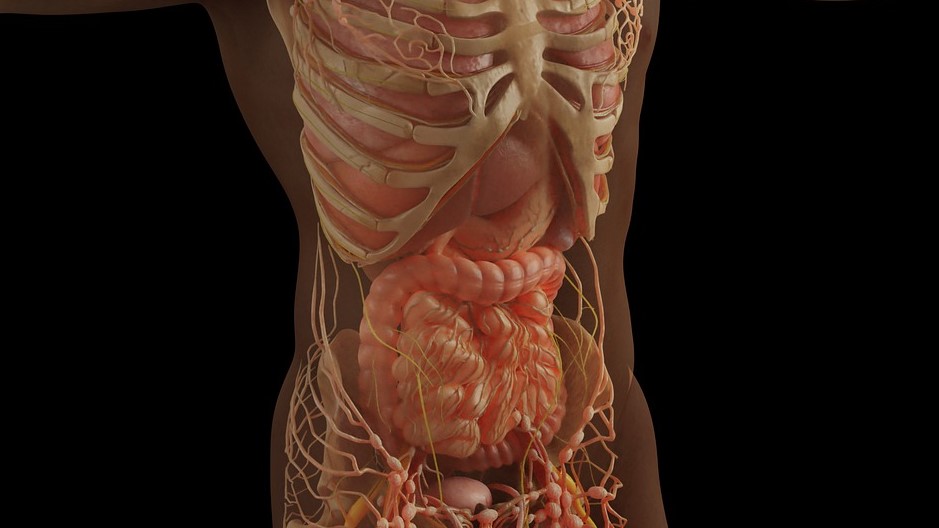High-fat Diets are ‘Ticking Time Bombs’ for Liver Cancer

A new study on the development of liver cancer reveals a complex interplay between cellular metabolism and DNA damage that drives the progression of fatty liver disease to cancer. The findings, published in Nature, suggest new paths forward for preventing and treating liver cancer and have significant implications on our understanding of cancer’s origin and the effects of diet on our DNA.
The incidence of the most common form of liver cancer, hepatocellular carcinoma (HCC), has grown by 25-30% in the past two decades, with much of the growth attributed to the dramatic rise in fatty liver disease. About 20% of individuals with fatty liver disease have a severe form of the disease, called metabolic dysfunction-associated steatohepatitis (MASH), that greatly increases the risk of HCC. However, how MASH transitions to liver cancer is not well understood.
“Going from fatty liver disease to MASH to liver cancer is a very common scenario, and the consequences can be deadly,” said Michael Karin, PhD, Distinguished Professor in the Department of Pharmacology at UC San Diego School of Medicine. MASH ends up destroying the liver, or leading to often-fatal liver cancer, but little is know of the process at the subcellular level.
The researchers used a combination of mouse models and human tissue specimens and databases to demonstrate that MASH-inducing diets, which are rich in fat and sugar, cause DNA damage in liver cells that causes them to go into senescence, a state in which cells are still alive and metabolically active but can no longer divide. Senescence is a normal response to a variety of cellular stressors. In a perfect world, senescence gives the body time to repair damage or eliminate the damaged cells before they’re allowed to proliferate more widely and become cancerous.
“A poor, fast-food diet can be as dangerous as cigarette smoking in the long run. People need to understand that bad diets do far more than just alter a person’s cosmetic appearance. They can fundamentally change how our cells function, right down to their DNA.”
Michael Karin, PhD
However, as the researchers discovered, this isn’t what happens in liver cells, also known as hepatocytes. In hepatocytes, some damaged cells survive this process.
These cells are, according to Karin, “like ticking time bombs that could start proliferating again at any point and ultimately become cancerous.”
“Comprehensive genomic analyses of tumour DNA indicate that they originate from liver cells damaged by MASH, emphasising a direct link between diet-induced DNA damage and the development of cancer,” added study co-author Ludmil Alexandrov, PhD, associate professor of cellular and molecular medicine and bioengineering at UC San Diego and member of UC San Diego Moores Cancer Center.
The findings suggest that developing new drugs to prevent or reverse DNA damage could be a promising therapeutic approach for preventing liver cancer, particularly in people with MASH.
“There are a few possibilities for how this could be leveraged into a future treatment, but it will take more time and research to explore these ideas,” said Karin. “One hypothesis is that a high-fat diet could lead to an imbalance in the raw materials our cells use to build and repair DNA, and that we could use drugs or nutri-chemicals to correct these imbalances. Another idea is developing new antioxidants, much more efficient and specific than the ones we have now, and using those could help block or reverse the cellular stress that causes DNA damage in the first place.”
In addition to opening these new avenues of treatment for liver cancer, the study also offers new insight into the relationship between aging and cancer.
“We know that aging increases the risk of virtually all cancers and that aging is associated with cellular senescence, but this introduces a paradox since senescence is supposed to guard against cancer,” said Karin. “This study helps reveal the underlying molecular biology that allows cells to re-enter the cell cycle after undergoing senescence, and we believe that similar mechanisms could be acting in a wide range of cancers.”
The findings also help directly quantify the detrimental effects of poor diet on cellular metabolism which, according to Karin, could be used to help guide public health messaging related to fatty liver disease.
“A poor, fast-food diet can be as dangerous as cigarette smoking in the long run,” said Karin. “People need to understand that bad diets do far more than just alter a person’s cosmetic appearance. They can fundamentally change how our cells function, right down to their DNA.”



